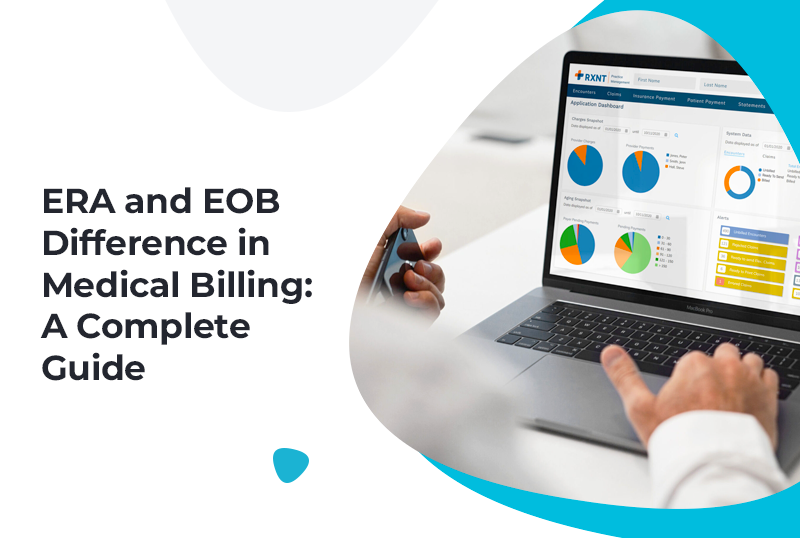Keeping your reimbursement process accurate and efficient can be challenging for healthcare providers and physicians. However, understanding ERA and EOB difference in medical billing can help you maintain a healthy cash flow and optimize your practice for smooth operations. To get this done, repetitive errors must be avoided for claim denials.
Understand how Explanation of Benefits (EOB) and Electronic Remittance Advice (ERA) documentation can increase your collections and optimize your medical billing process.
Let’s dive in and see how ERA and EOB can increase your profits and how they impact efficiency in medical billing services.
Also See: What Does AR in Medical Billing Stands for In Healthcare?
What Happens After You Submit a Claim?
You will receive a response from the payer within two to three weeks after submitting a claim. The response is in the form of an ERA or EOB, and these documents inform you of the status of the claim. Approvals and denials can affect healthcare revenue leading to inaccuracy and errors.
Understanding ERA vs. EOB in Medical Billing
The purpose of ERA and EOB is the same regarding claim payments and denials. However, the main difference between them is how they deliver:
1. EOB (Explanation of Benefits)
EOB is a paper statement received via traditional mail with your payment (if approved). The statement contains the breakdown of the cost of care, any savings from in-network services, and what the patient still owes.
2. ERA (Electronic Remittance Advice)
ERA is an electronic statement received electronically, with the payment being received as a check or through EFT (Electronic Funds Transfer). The process of ERAs is faster than EOBs, allowing quick payments and better efficiency.
Why Are ERAs and EOBs Important to Your Billing Process?
ERAs and EOBs are important for tracking your payments and identifying patient responsibilities, such as deductibles, co-pays, and co-insurance. These documents increase efficiency in allocating payments, following up on denied claims and avoiding errors in the revenue cycle.
Increase Your Collections with Accurate ERA and EOB Interpretation
Accurately interpreting ERA and EOB difference in medical billing is important for improving first-time payment success for healthcare providers. Understand how to apply payments correctly to reduce unpaid claims and increase collection rates. Additionally, it enables you to quickly address denied claims, making sure the payments are received promptly.
Why Use Billing Software?
Inputting the information from ERAs and EOBs into billing software such as Brightree or AdvancedMD is essential for keeping track of payments, patient balances, and unpaid claims. This software simplifies the process, helps identify reimbursement patterns, and flags claims that require follow-up— increasing efficiency and collections.
Also See: How EHR Software Helps In Back Office Support
What’s Inside an ERA or EOB?
- The patient’s name (or their dependent’s) and health insurance details
- The provider’s name and the date of service
- The cost of care billed to the insurance company
- The amount the insurance paid and the dues on the patient.
- The allowed amount—the maximum payment for each service—along with any adjustments and write-offs
- You can easily track the payments, check follow-ups, verify documents, and minimize errors.
Key Differences Between ERA and EOB in Medical Billing
| Feature | ERA | EOB |
|---|---|---|
| Recipient | Healthcare provider | Patient |
| Purpose | Notification of claim processing and payment | Explanation of benefits and costs |
| Content | Claim information, payment details, remittance information | Patient information, provider information, service details, insurance coverage, out-of-pocket costs |
Conclusion
Whether you’re an experienced physician or a medical student preparing for the future, understanding the claims process and knowing ERAs and EOBs is important for better-practice finances. Start understanding these documents to optimize your revenue cycle and increase your collection rates!
Precision Hub: Your Trusted Partner
Understanding ERA and EOB difference in medical billing, know their purpose, content, and how they impact the billing process differently. You can choose our complete medical billing services, which are flexible, scalable, and compliant with industry standards. Precision Hub specializes in optimizing medical billing for your healthcare practice.
Ready to optimize your revenue cycle management?
Contact Precision Hub today to learn how our medical billing services can optimize your financial operations and drive practice success.

